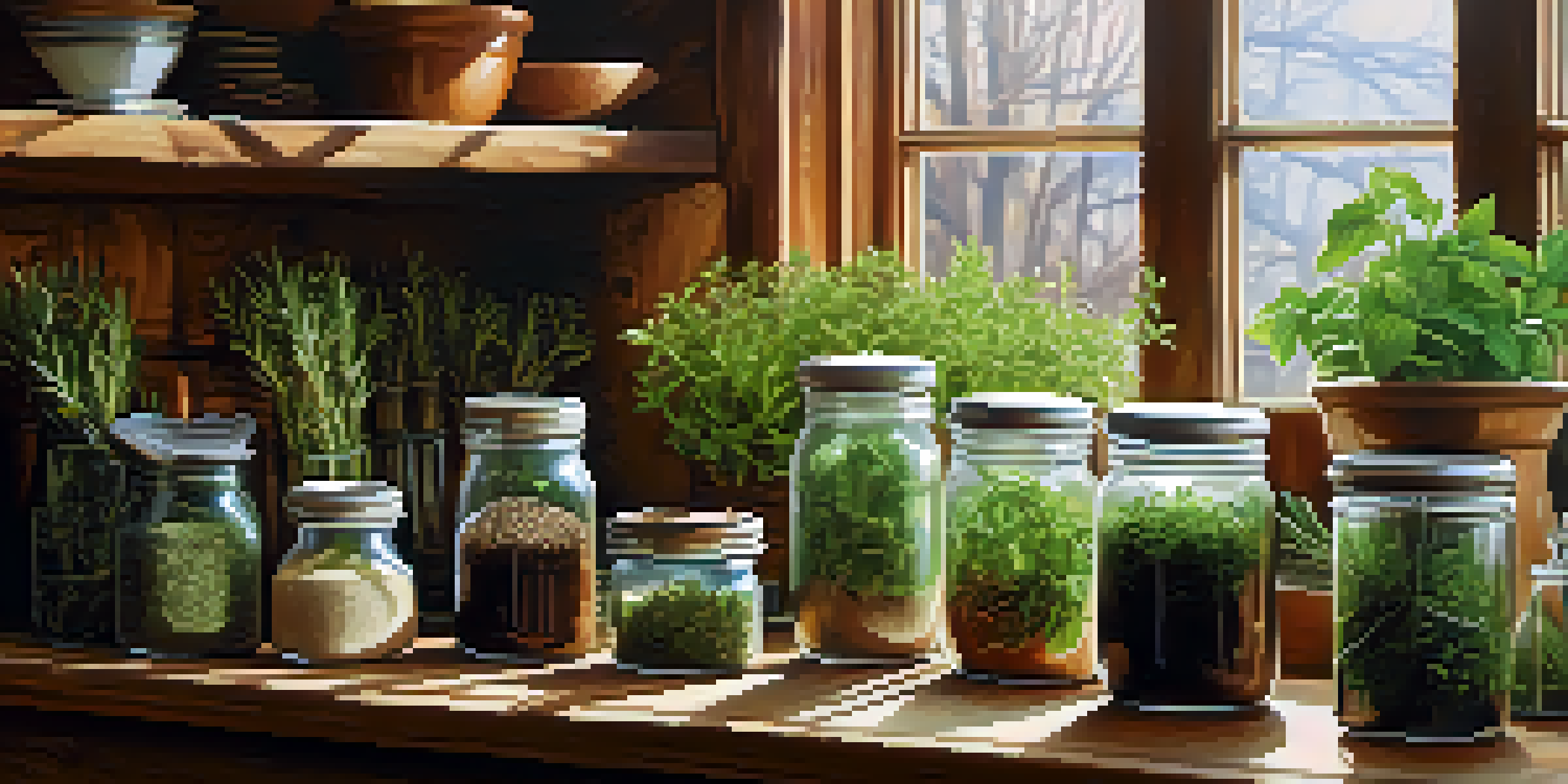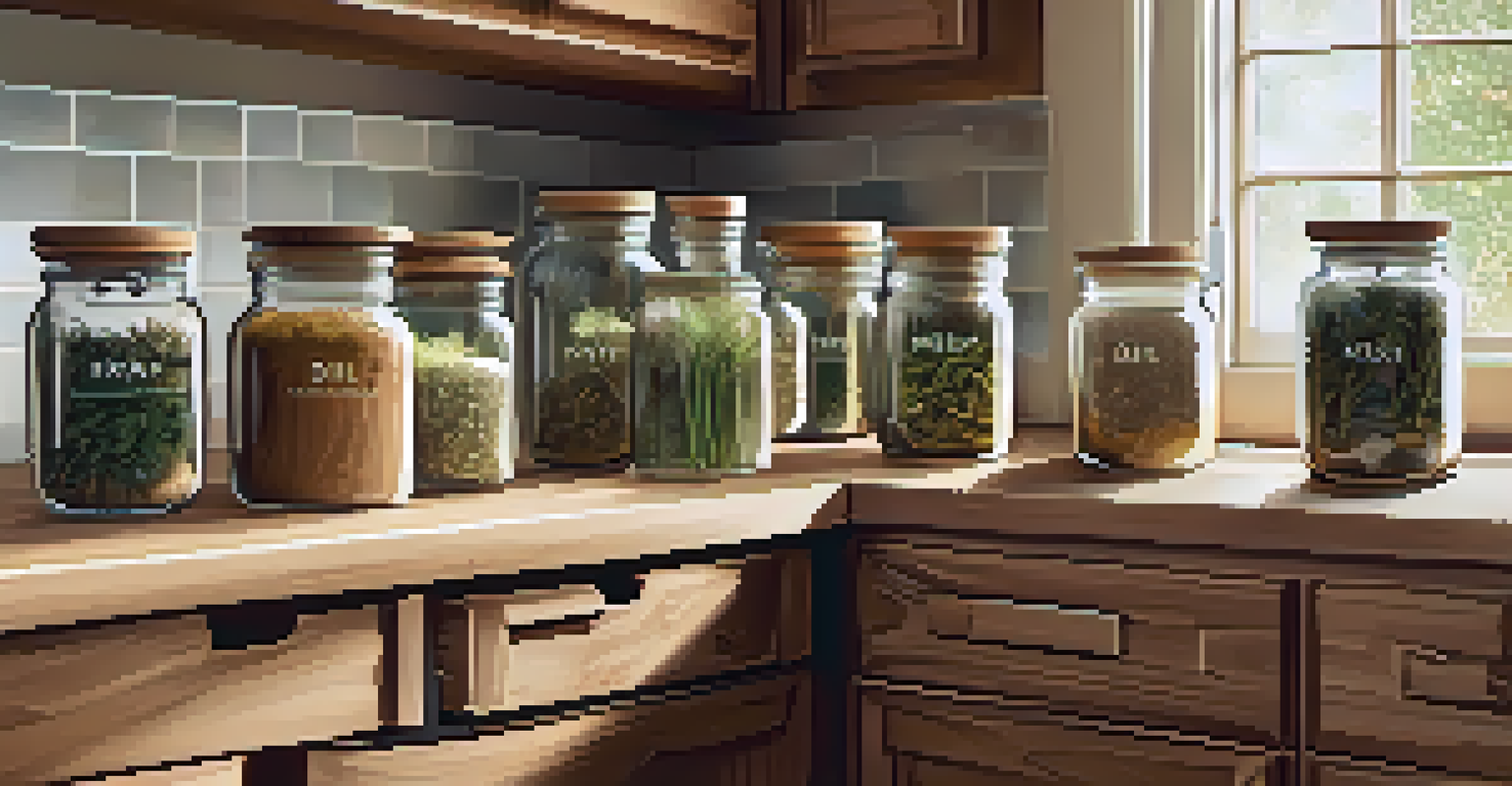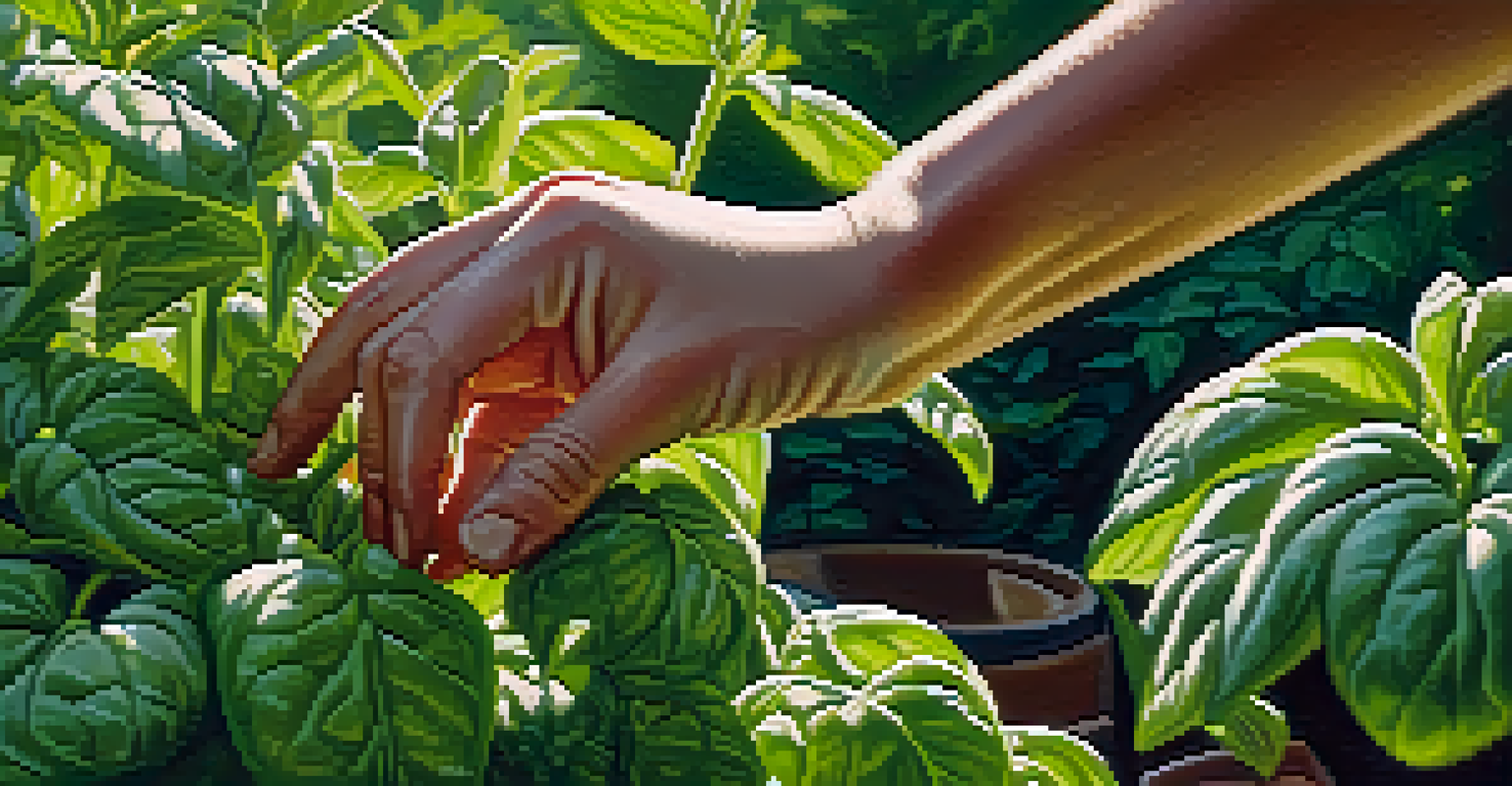How to Dry and Preserve Your Homegrown Herbs

Understanding the Benefits of Drying Herbs at Home
Drying herbs at home not only preserves their flavor but also enhances your cooking. Fresh herbs can spoil quickly, so drying them allows you to enjoy your homegrown bounty year-round. Plus, it's a cost-effective way to ensure you always have herbs on hand.
Herbs are the great flavor enhancers. They are the magic touch that can elevate even the simplest dish into something special.
Imagine stepping into your kitchen and having a jar of fragrant dried basil or thyme ready to elevate your dishes. Not only do dried herbs offer convenience, but they also pack a punch of flavor, ensuring your meals are just as delicious as when they were fresh.
Additionally, drying herbs is a sustainable practice. Instead of letting your excess herbs go to waste, you’re taking proactive steps to minimize waste while maximizing flavor. It’s a win-win for your kitchen and the environment!
Choosing the Right Herbs for Drying
Not all herbs dry well, so it's essential to choose the right ones. Herbs like basil, oregano, thyme, and rosemary are excellent candidates due to their robust flavors and aromatic qualities. In contrast, delicate herbs like parsley and cilantro may not retain their flavor as effectively when dried.

Think of it like picking the best fruits for a smoothie; you want those that will give you the most flavor and nutrients. Similarly, selecting herbs that dry well ensures you’ll have the most aromatic and flavorful options to use later.
Drying Herbs Preserves Flavor
Drying herbs at home allows you to enjoy their flavors year-round while minimizing waste.
Before you start harvesting, consider your recipe preferences. If you often cook Italian dishes, focusing on basil and oregano can be beneficial. This strategic planning will make your dried herb collection more functional.
Harvesting Your Herbs at the Right Time
Timing is crucial when it comes to harvesting herbs for drying. The best time to pick herbs is in the morning after the dew has dried but before the sun is too hot. This timing ensures the plants are full of moisture and flavor, making for a better drying experience.
The kitchen is a place of creativity, and herbs are its paintbrushes. With them, you can transform ordinary meals into extraordinary experiences.
Imagine trying to capture sunshine in a bottle; if you pick the herbs too late in the day, they may have lost some of their aromatic oils. By harvesting early, you're ensuring that you’re preserving the essence of the herbs.
Always cut the stems rather than pulling leaves off, as this minimizes damage to the plant. This way, your herbs can continue to grow and provide you with fresh produce even after harvesting.
Popular Methods for Drying Herbs at Home
There are various ways to dry herbs, and each method has its own charm. Air drying is the simplest—just tie a bunch of herbs together and hang them upside down in a warm, dry, and well-ventilated spot. This method allows for a slow and gentle drying process, preserving the flavor.
Alternatively, you can use a food dehydrator or an oven on the lowest setting. These methods speed up the drying process, especially useful if you're in a hurry. Just keep an eye on them to prevent burning, as dried herbs should remain green and aromatic.
Choose the Right Herbs to Dry
Selecting robust herbs like basil and oregano ensures flavorful dried options for your cooking.
Regardless of the method you choose, ensure that the herbs are thoroughly dried before storing them. This prevents mold and ensures their shelf life is maximized, allowing you to enjoy your herbs for months to come.
Storing Your Dried Herbs for Maximum Freshness
Once your herbs are dried, proper storage is key to maintaining their freshness. Use airtight containers like glass jars or vacuum-sealed bags to keep moisture out. Label each container with the herb’s name and the date to keep track of freshness.
Think of your dried herbs as treasures; proper storage is like putting them in a safe. This way, they remain potent and flavorful for as long as possible.
Avoid storing herbs in direct sunlight or near heat sources, as these can degrade their quality. Instead, find a cool, dark place in your kitchen, like a pantry or cupboard, ensuring easy access when you're ready to cook.
How to Use Dried Herbs in Your Cooking
Dried herbs can be used in a multitude of dishes, but they require a different approach than fresh herbs. A good rule of thumb is to use one-third the amount of dried herbs as you would fresh. This is because dried herbs are more concentrated in flavor.
Imagine cooking with dried herbs as using a concentrated flavor extract; a little goes a long way! So, sprinkle lightly and taste as you go to achieve the perfect flavor balance in your dishes.
Proper Storage Maintains Freshness
Using airtight containers and storing herbs in a cool, dark place helps retain their potency and aroma.
Additionally, consider adding dried herbs earlier in the cooking process. This allows their flavors to meld with other ingredients, enhancing the overall taste. So, whether you’re making a hearty soup or a zesty sauce, dried herbs can elevate your culinary creations.
Troubleshooting Common Issues with Dried Herbs
Sometimes, things don’t go as planned, and you may encounter issues with your dried herbs. If your herbs lose their flavor, it could be due to improper drying or storage. Always ensure your herbs are completely dry before storing them to prevent moisture-related problems.
Another common issue is color fading, which can happen when herbs are exposed to light. Always store your herbs in dark containers to retain their vibrant colors and essential oils.

If you notice your herbs have lost their aroma, it might be time to refresh your stock. Dried herbs typically last about one to three years, depending on the type. Mark your containers with the date to keep track and replace them as needed to maintain your cooking quality.